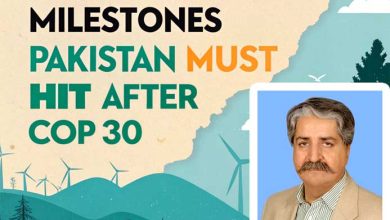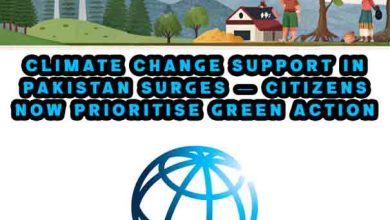Growing Green: 7 Powerful Ways Pakistan Can Tackle Climate Change for a Safer Tomorrow
Pakistan climate change threats like floods, heatwaves, and pollution demand urgent action. Discover 7 powerful ways Pakistan can secure a greener, safer future.
Pakistan climate change threats are escalating—floods, scorching heatwaves, smog, and unpredictable weather patterns are now the norm. From the historic 2022 floods affecting over 33 million people to the recent surprise hailstorm in Islamabad, the message is loud and clear: climate change is here, and Pakistan must act now.
According to the Global Climate Risk Index, Pakistan ranked among the top 10 most climate-affected countries from 2000 to 2019. The monsoon season now brings fear instead of relief. The time has come for urgent, united, and practical solutions.
1. Grow Trees, Cool Cities: Combat Deforestation
Planting trees is one of the most effective ways to fight climate change. Trees absorb carbon dioxide, regulate temperature, reduce floods, and improve air quality.
Pakistan’s government started the Ten Billion Tree Tsunami project, but the impact is limited without broader support. We need mass tree plantations not just in forests but also in urban areas like Karachi, Lahore, and Peshawar, where concrete jungles have replaced green zones.
Actionable Tip: Join local tree-planting drives, start school greening programs, or simply plant one tree in your home or neighborhood.
2. Clean Rivers, Clean Future: Restore Water Health
Rivers like the Indus are Pakistan’s lifeline, supporting farming, drinking water, and biodiversity. Yet they are choking with plastic, industrial discharge, and sewage.
In Sindh and Balochistan, especially, polluted rivers are harming human health and agriculture.
Action Plan:
- Stop dumping waste into rivers.
- Build wastewater treatment plants.
- Plant trees along riverbanks to prevent erosion.
Community engagement, especially in rural areas, is key. River clean-up campaigns involving schools and mosques can create real change.
3. Save Every Drop: Smart Water Management
Pakistan swings between floods and droughts. Water scarcity is now a growing threat due to climate change and mismanagement.
To improve water resilience:
- Build small dams and rainwater harvesting systems.
- Fix leaking canals.
- Encourage drip irrigation and smart agriculture.
Education campaigns in schools, mosques, and local communities can raise awareness about water-saving habits.
4. Go Green with Energy: Invest in Renewables
Currently, Pakistan relies heavily on fossil fuels—coal, oil, and gas—that worsen air pollution and heat.
The Alternative and Renewable Energy Policy is a step in the right direction, but we need more momentum.
Solutions:
- Subsidize solar panels for homes and schools.
- Expand wind energy projects in Sindh’s coastal areas.
- Invest in hydropower while ensuring minimal ecological damage.
Fun Fact: Solar energy is now cheaper than coal in many parts of the world. Pakistan should ride this wave!
5. Clean Cities: Tackle Waste and Pollution
From Lahore’s deadly smog to Karachi’s mounting garbage, pollution is choking Pakistan’s cities.
Main sources:
- Open burning of trash
- Industrial emissions
- Plastic pollution
- Untreated sewage
Practical Steps:
- Ban single-use plastics nationwide.
- Set up recycling bins in public places.
- Enforce pollution control laws on industries and farms.
Schools and universities should start eco-clubs that run awareness drives and clean-up events.
6. Learn from Neighbors: Bangladesh as a Model
Bangladesh, despite being a poor country, has made remarkable strides in climate adaptation:
✅ Early flood warning systems
✅ Safe cyclone shelters
✅ Community-based mangrove planting
✅ Promotion of climate-resilient crops
These low-cost solutions can be replicated in Pakistan, especially in flood-prone regions like Southern Punjab and Sindh.
7. Together We Rise: Community Participation Matters
No climate plan will work without public support.
- Students can lead campaigns in schools.
- Farmers can adopt climate-smart techniques.
- Shopkeepers can reduce plastic use.
- Women and youth groups can run awareness drives.
Everyone has a role.
Even small changes, like switching off lights or using reusable bags, can collectively create a massive impact.
Final Thoughts: The Time to Act is Now
The Pakistan climate change crisis is no longer a distant worry—it is our daily reality. With rising sea levels, unpredictable monsoons, and severe heatwaves, inaction is not an option.
But there is hope.
By planting trees, saving water, cleaning rivers, and shifting to clean energy, Pakistan can build a resilient and green future.
Let us learn from global best practices and invest in our communities. This is the time for a Green Revolution in Pakistan—not tomorrow, but today.







